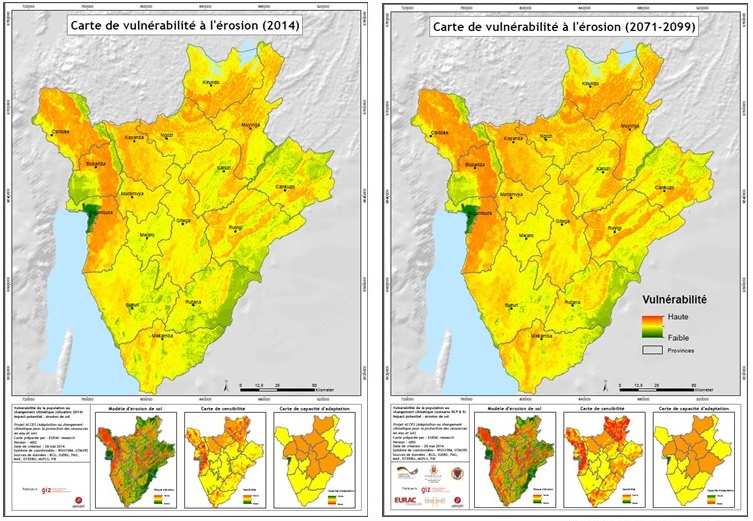

The vulnerability assessment was carried out for three periods: the status quo in 2014, the period 2030-2060 and the period 2070-2100. The assessment follows the eight-step approach described in GIZ’s Vulnerability Sourcebook, and was supplemented by a scientific modeling of the impacts of climate change for Burundi.
The study was carried out by three institutions (Adelphi, EURAC, PIK) in collaboration with GIZ / ACCES and its partners. Four national workshops were held with all relevant stakeholders. A group of experts was created to advise and direct the process. Activities at the local level at the selected project sites were carried out in close collaboration with local governmental and non-governmental actors and the local population.
The results of the assessment were presented in the form of vulnerability maps for the three factors of erosion, drought and malaria prevalence. Highly vulnerable areas have been identified to guide the identification of three pilot watersheds. In these watersheds, local vulnerability assessments were conducted to identify local challenges and appropriate adaptation measures.
- National Workshops: enabled participants (government and civil society) to better understand the process and to share their perspectives and expertise on the topic.
- Establishment of an expert group composed of experts from various Burundian ministries and institutions: important for the ownership of the process itself and its results.
- Integration of vulnerability assessment into the National Adaptation Plan (NAP) process in Burundi.
- Data availability was a major challenge. Most government records are not classified and documents and information are incomplete. Aggregate data are often only available at the national and provincial levels, making it difficult to communicate at the local level.
- The results of the vulnerability assessment form the basis for integrating climate change adaptation into national and local investment policies, strategies and plans. Other actors can use this experience and information for adaptation planning.
- The methodology used to assess vulnerability in Burundi is based on a standardized methodology, which allows for replication.